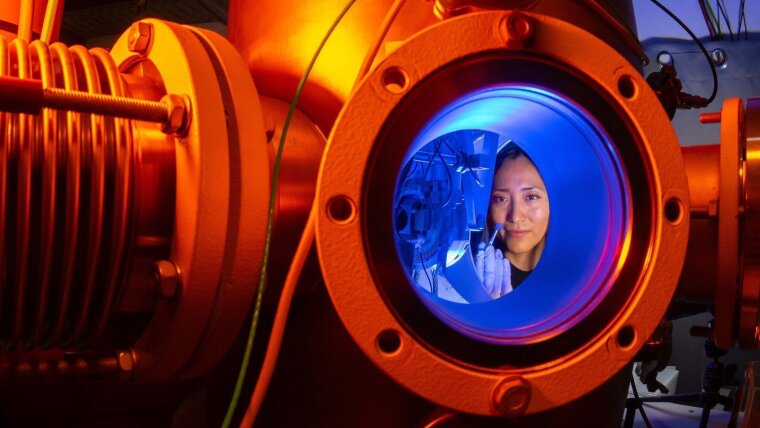
- Light
Published: | By: Laurenz Kötter/Axel Burchardt
Source article
While computer chips are becoming smaller and faster with every passing year, there is one challenge that remains unsolved: integrating electronics and photonics onto a single chip. Although micro-LEDs exist as single chips and waveguides as tiny fibre optic cables, the materials required to make them are too heterogenous to combine in a single harmonious chip. A novel etching technique, however, could prove to be the decisive breakthrough in combining optoelectronic light sources and photonic fibre optics. Researchers at Friedrich Schiller University Jena and Technische Universität Braunschweig have launched a joint project focusing on porous gallium nitride. The OptoGaN project—full title “Highly integrated microphotonic modules in nitride technologies”—has been awarded roughly 600,000 euros of funding by the Federal Ministry of Education and Research (BMBF) for a three-year term.
Germany’s burgeoning photonics industry would be well advised to pay particularly close attention to developments in Jena and Braunschweig in the years ahead. The research groups participating in the project are convinced that their idea could serve an array of potential applications. The project partners hope to establish three applications with one start-up each as demonstrators. Their research could benefit technologies such as waveguides, neuromorphic computing and the trapped-ion quantum computer operated by the Quantum Valley Lower Saxony network.
But how exactly might this technology be applied? Consider, by way of example, the process of manipulating the ions of a quantum computer: this still requires large-scale laser systems. If more and more quantum bits are to be incorporated into these computers, their laser systems must become significantly smaller, ideally becoming no larger than a chip. Yet, silicon dioxide—the standard material for waveguides on chips—absorbs the critical wavelengths of light. Gallium nitride could provide a solution: the porous material has a low index of refraction and facilitates waveguiding of light to individual ions with minimal losses.
Complementary expertise in handling gallium nitride
The porous semiconductor is the result of a new, selective etching technique that turns electrically conductive areas into air-filled channels referred to as pores. The corresponding electrical contrast is realized through ion implantation with masks. This technique could even open the door to three-dimensional waveguides with complex optical light conduction. Gallium nitride and the novel process are compatible with the procedure used to manufacture LEDs and laser diodes to date, thereby making it possible to realize integrated electronic and photonic circuits.
Researchers from Jena and Braunschweig are combining their complementary expertise and specialist equipment to realize these innovative semiconductor channels for light guidance. This is because the etching technique has both electronic and chemical components. Firstly, researchers in Braunschweig produce the base material, layer by layer. The semiconductor chip is then shipped to Jena for ion implantation. The researchers in Jena dope the chip and make targeted changes to its electronic properties. Finally, the chip returns to Braunschweig, where there chemical etching process creates the final, porous structure.